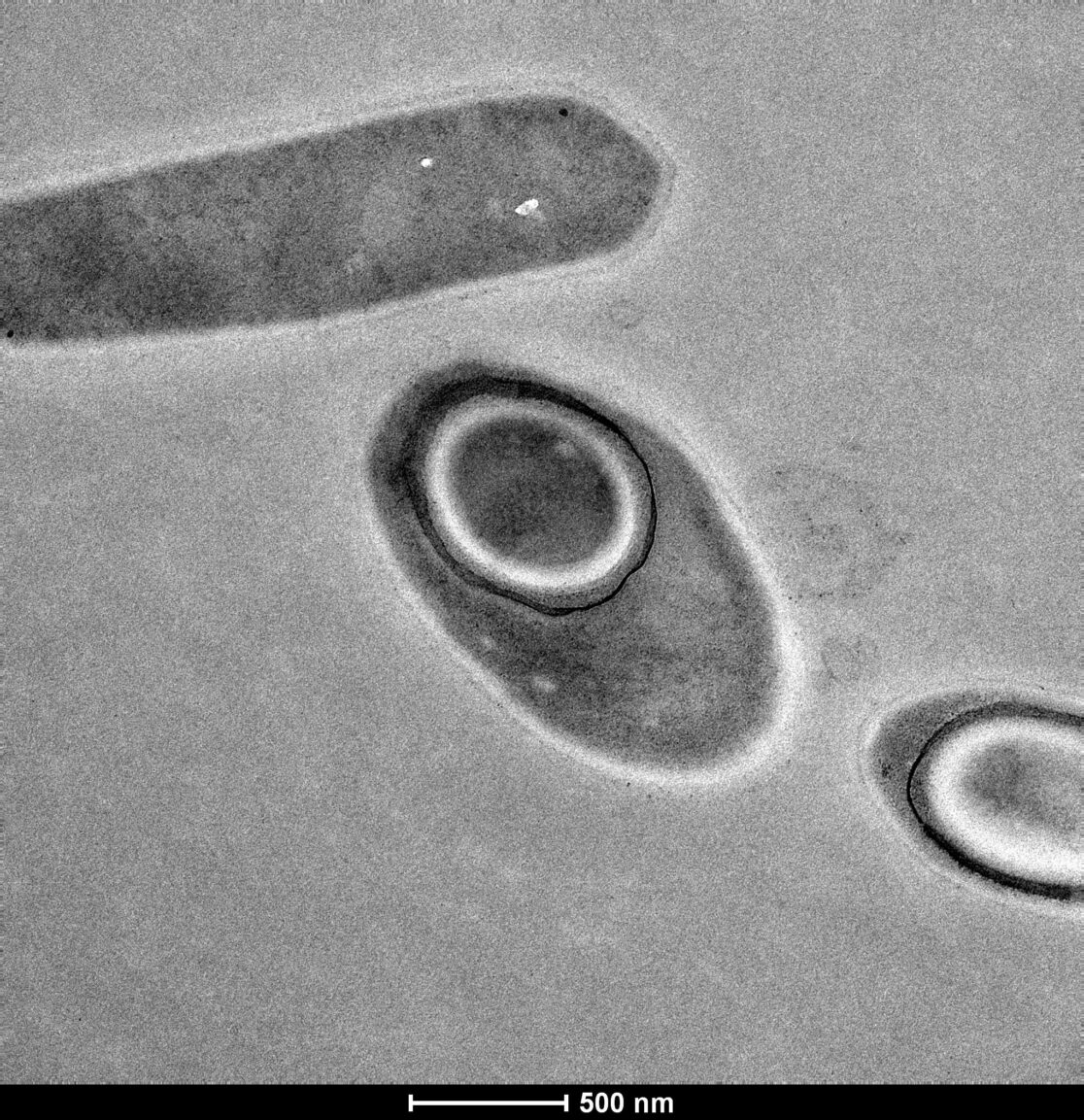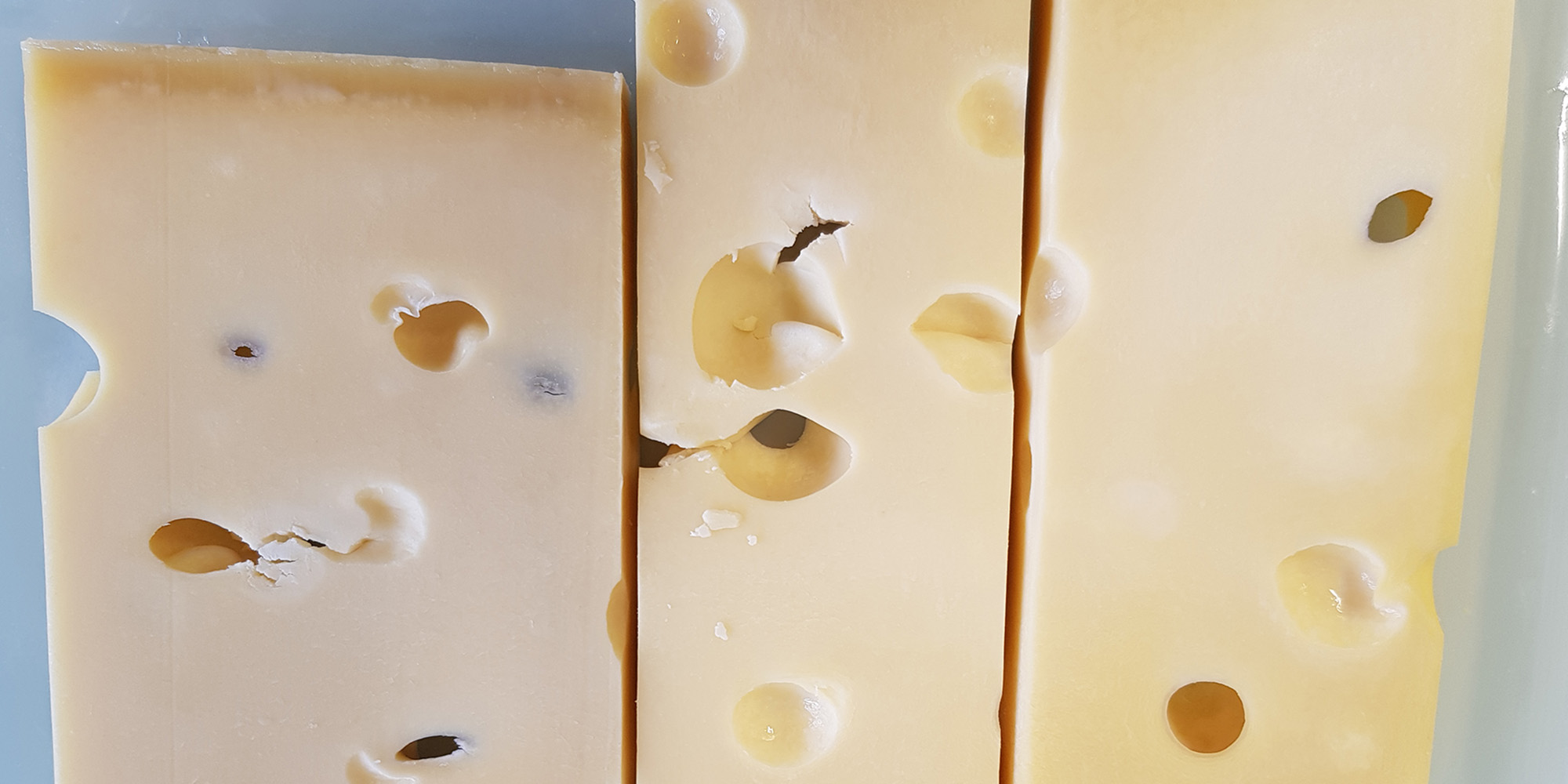A New Bacterial Species Identified as the Cause of the ‘Putrificus’ Cheese Defect
Photo: Emmanuelle Arias-Roth,
Agroscope
Agroscope and its Italian counterpart CREA (Consiglio per la ricerca in agricoltura e l’analisi dell’economia agraria) have described the new bacterial species Clostridium caseinilyticum sp. nov., isolated from cheese with the ‘putrificus’ quality defect and from silage. The study sheds light on potential causes and can contribute to the development of preventive measures.
Several Clostridium species are responsible for significant losses in the food industry. In particular, certain hard and extra-hard cheeses occasionally exhibit a defect designated as a putrid degradation of the cheese matrix (‘putrificus‘) sometimes resulting in significant losses. Agroscope and CREA researchers have characterised a novel, obligately anaerobic, spore-forming and motile bacterium isolated both from cheeses with this defect and from silage. Despite constituting a distinct species, this new strain, dubbed Clostridium caseinilyticum sp. nov., was long confused with Clostridium sporogenes, which until recently was regarded as responsible for the ‘putrificus’ defect.
Clostridium caseinilyticum sp. nov. isolated from various sources
The type strain of the new species, FAM 1755T, was obtained in 1983 from a Swiss Emmentaler cheese with the ‘putrificus’ defect. The two other strains studied, CREA 4990 and FAM 27665, were isolated in 2022 and 2012, respectively – the former by the Italian partners from a Grana Padano with the same defect, the latter from Swiss silage. It has only recently been noted that these isolates, previously attributed to the species Clostridium sporogenes, actually form a distinct species.
Description of the new bacterial species
The rod-shaped, Gram-positive cells of the isolate FAM 1755T measure 3–4.5µm in length and 0.7–0.9µm in width. Investigation of the family relationships via whole-genome and 16S-rRNA gene sequences places the new taxon close to Clostridium tepidum DSM 104389T and members of the Clostridium botulinum Group I such as Clostridium sporogenes DSM 795T. The new species grows in a somewhat lower temperature range (20–40 °C) than C. tepidum and C. Sporogenes and is more halotolerant than C. tepidum. Although genetically closer to C. tepidum, its growth preferences tend to resemble those of C. sporogenes, a species growing under similar conditions in the cheese and with which it was long confused. Unlike C. tepidum, the new species consistently hydrolyses lactoproteins – a characteristic associated with cheese spoilage. For this reason, we suggest the name Clostridium caseinilyticum sp. nov., meaning ‘Clostridium that degrades casein’.

More-targeted prevention of cheese defects in future
Screening raw milk for proteolytic Clostridia could prevent this species entering the processing line via the milk. Adhering to good hygiene and production practices also helps to minimise the risk of cheese spoilage during the ripening process. The description of the new species paves the way for further studies on the conditions promoting or impeding its growth in the cheese, and for the development of suitable preventive measures that can be applied during milk production and processing.
Conclusions
- Researchers have described a novel, obligately anaerobic, spore-forming and motile bacterium with the name Clostridium caseinilyticum sp. nov., isolated from hard and extra-hard cheeses with quality defects and from silage.
- The new species is responsible for the ‘putrificus’ cheese defect long attributed to its close relative Clostridium sporogenes.
- The description of Clostridium caseinilyticum sp. nov. paves the way for a better understanding of both the factors favouring its growth in cheese and the associated defect.
- The identification of the role of Clostridium caseinilyticum sp. nov. in cheese spoilage highlights the necessity of targeted monitoring and prevention strategies.
Bibliographical reference
Clostridium caseinilyticum sp. nov., a close relative of Clostridium tepidum and Clostridium sporogenes, isolated from spoiled cheese and silage.



